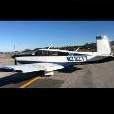Which way to go?
-
Members Online
- EricJ
- Hank
- Schllc
- 1967 427
- 76Srat
- TheAv8r
- M Terry
- LANCECASPER
- Bartman
- Mark89114
- redbaron1982
- Jarerh
- takair
- Vintagevalves
- Guy123
- mmcdaniel33
- Justin Schmidt
- 201er
- JimK
- Flyler
- cbarry
- Graf_Aviator
- Parker_Woodruff
- toto
- flyboy0681
- Aerodon
- Jake@BevanAviation
- Trente
- PeteMc
- Cfidave
- Skates97
- Steve Dawson
- devyn6seven


Recommended Posts